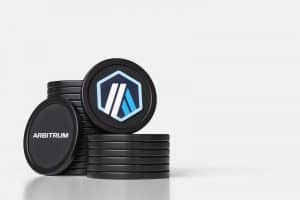Blockchain Bridges


What is Blockchain Bridges?
A blockchain bridge is a technology that connects two blockchains to allow them to interact. A blockchain bridge allows you to engage in DeFi activities on the Ethereum network if you own bitcoin but do not want to sell it. Blockchain bridges are essential for achieving blockchain interoperability.
Understanding Blockchain Bridges
There are several bridge designs, but they may generally be classified into two camps: more centralized bridges that rely on trust or federation, and more decentralized “trustless” bridges. Centralized bridges rely on some form of central authority or system to function, which means that consumers must trust a mediator in order to use a certain app or service.
Trustless bridges, on the other hand, do not require users to invest their trust in a single person or authority. Rather, faith is placed in the mathematical truth embedded in the code. This truth is reached in a decentralized blockchain system by numerous computer nodes reaching a shared consensus according to the rules embedded into the software. By utilizing openness and incentivizing public participation, this eliminates many of the difficulties associated with centralized institutions, which are prone to corruption or abuse of power.
Bridges can be built for a variety of purposes. They can interchange any type of data, including smart contract calls, decentralized identities, off-chain information from oracles such as stock market price feeds, and much more. A chain anchoring verifiable credentials on Polkadot, for example, may be utilized for KYC (Know Your Customer) needs by an Ethereum-based gaming company. Bridges enable applications to be even more decentralized because they are no longer constrained by their origin network.
Read related articles:
« Back to Glossary IndexDisclaimer
In line with the Trust Project guidelines, please note that the information provided on this page is not intended to be and should not be interpreted as legal, tax, investment, financial, or any other form of advice. It is important to only invest what you can afford to lose and to seek independent financial advice if you have any doubts. For further information, we suggest referring to the terms and conditions as well as the help and support pages provided by the issuer or advertiser. MetaversePost is committed to accurate, unbiased reporting, but market conditions are subject to change without notice.
About The Author
Damir is the team leader, product manager, and editor at Metaverse Post, covering topics such as AI/ML, AGI, LLMs, Metaverse, and Web3-related fields. His articles attract a massive audience of over a million users every month. He appears to be an expert with 10 years of experience in SEO and digital marketing. Damir has been mentioned in Mashable, Wired, Cointelegraph, The New Yorker, Inside.com, Entrepreneur, BeInCrypto, and other publications. He travels between the UAE, Turkey, Russia, and the CIS as a digital nomad. Damir earned a bachelor's degree in physics, which he believes has given him the critical thinking skills needed to be successful in the ever-changing landscape of the internet.
More articles

Damir is the team leader, product manager, and editor at Metaverse Post, covering topics such as AI/ML, AGI, LLMs, Metaverse, and Web3-related fields. His articles attract a massive audience of over a million users every month. He appears to be an expert with 10 years of experience in SEO and digital marketing. Damir has been mentioned in Mashable, Wired, Cointelegraph, The New Yorker, Inside.com, Entrepreneur, BeInCrypto, and other publications. He travels between the UAE, Turkey, Russia, and the CIS as a digital nomad. Damir earned a bachelor's degree in physics, which he believes has given him the critical thinking skills needed to be successful in the ever-changing landscape of the internet.






















































